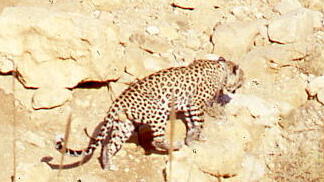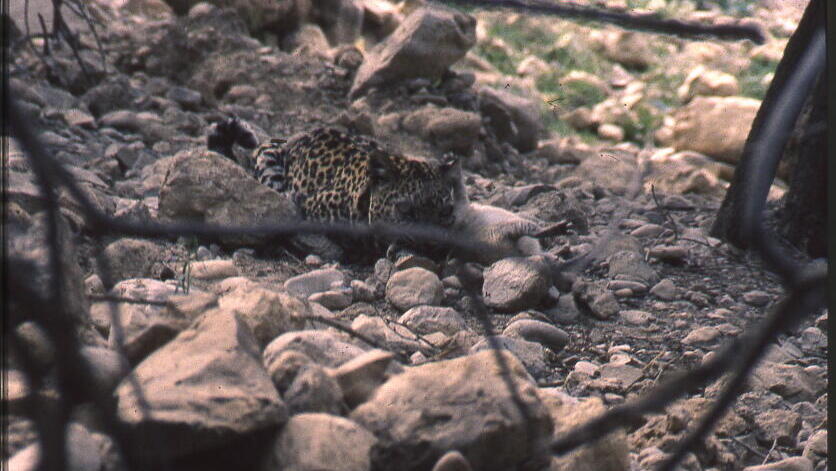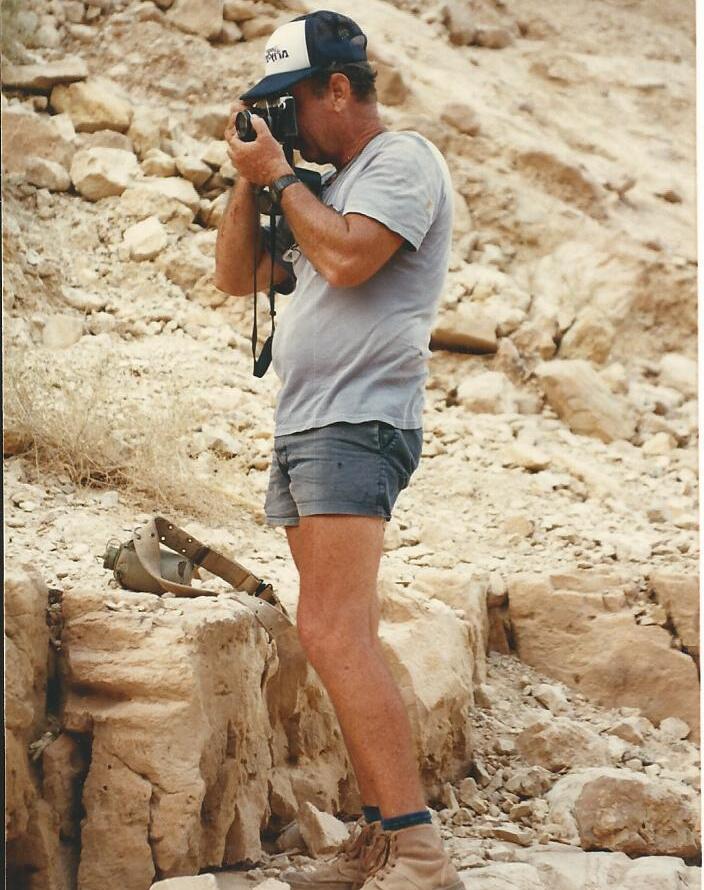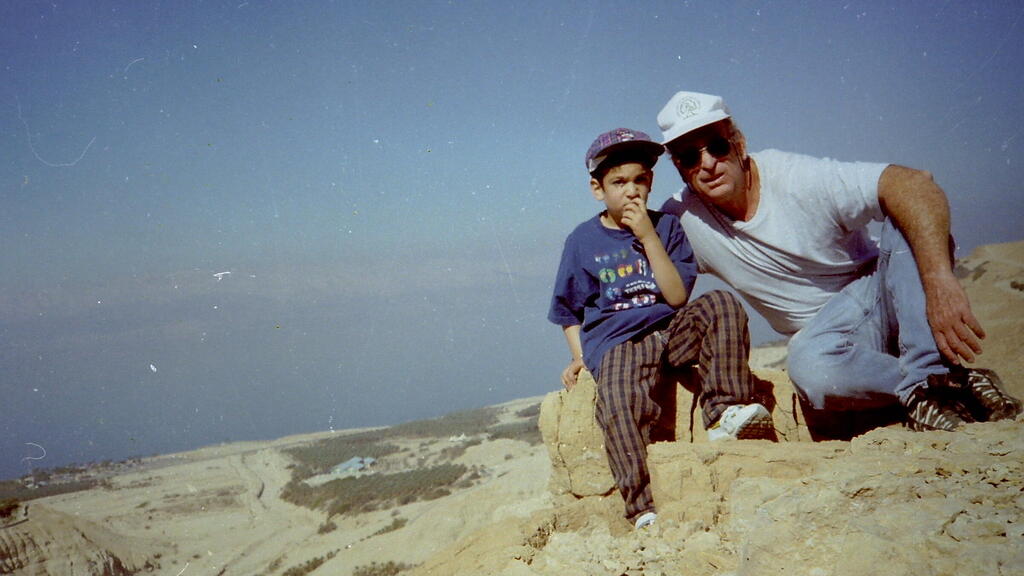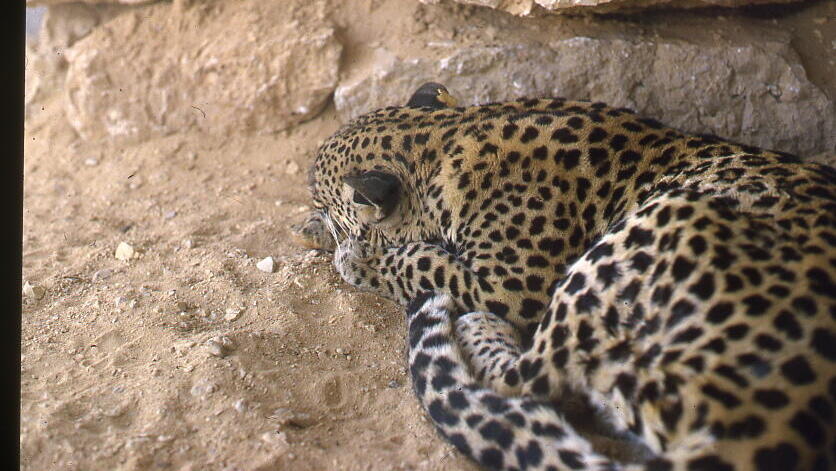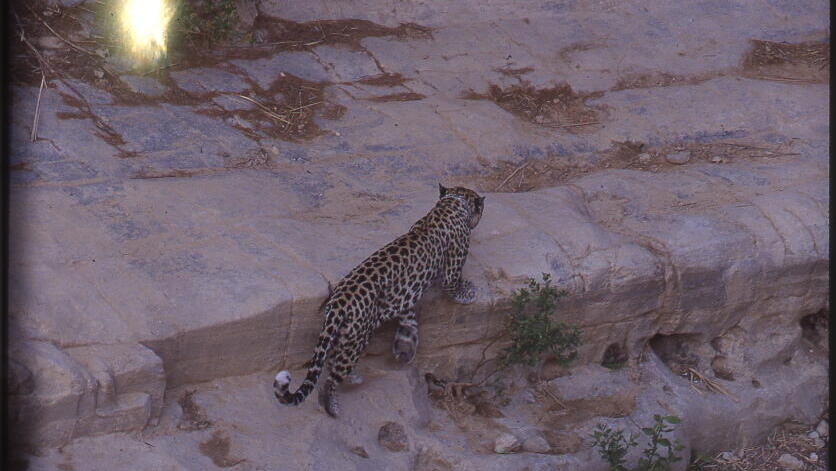Getting your Trinity Audio player ready...
Amatzia Shochat, a former director of the Ein Gedi Nature Reserve who passed away some four years ago, was one of the last Israelis who got to witness the local leopards roam free in the wild.
Several years before his passing, Shochat digitized old photographs of the leopards he shot in the nature reserve, and which were recently uncovered.
"He didn't talk much about the pictures," said his grandson Ron Tzur, a nature photographer himself. "He didn't make a big deal about documenting the leopards. I didn't even know he had a collection of pictures of the leopards. I heard a lot of stories about leopards from him and as a child, I would always wander around there a lot but I never saw all the pictures."
A few weeks ago, Tzur stumbled upon the photographs at his grandmother's house in Ein Gedi. Along with the unrevealed scanned copies he found, there lay a box of un-scanned photos never seen before.
"He was optimistic about the future of the leopards," Tzur said. "But at a certain point, he understood that they won't survive. I remember as a child, I knew the names of all the leopards and the relations between them because he talked about them all the time.
I was pretty little when the leopards roamed there. I was on standby. I was told 'when you get older, you'll go with grandpa to see the leopards at night.' That never happened."
In the 1980s, it wasn't uncommon to see signs warning visitors of leopards roaming free around Ein Gedi and instructing them to move around the grounds in groups of five for safety. In those days, locals and authorities feared the leopards.
The subspecies that once roamed Israel was the Arabian leopard, which is native to the Arabian Peninsula. Despite its relatively diminutive size, it is the apex predator in its habitat. Today, it is believed that there are fewer than 200 adult individuals left in the wild, most of which are in Oman and Yemen.
In 1993, Shochat wrote about the leopards: "The Ein Gedi reserve has the largest and most well-known permanent population of leopards in the country, hence its importance. This population is very small and is in danger of extinction. Ein Gedi has two females, Hamuibba and Shlomtzion, and two males, Amrapal and Herod. And a young cub was recently added," he described.
"In 1991, Shlomtzion appeared in the Nahal Arugot riverbed, in the company of a new offspring, after she disappeared for a relatively long period of time. After being first observed with the cub, it was decided to avoid any intervention in their lives. On the morning of Friday, 4.12.1992, we gazed at Amrapal, Shlomzion, and the cub, near the Ein Gedi spring, feeding together on the flesh of ibex prey. The shared meal of this family is perhaps indicative of this rare species' continuity here."


